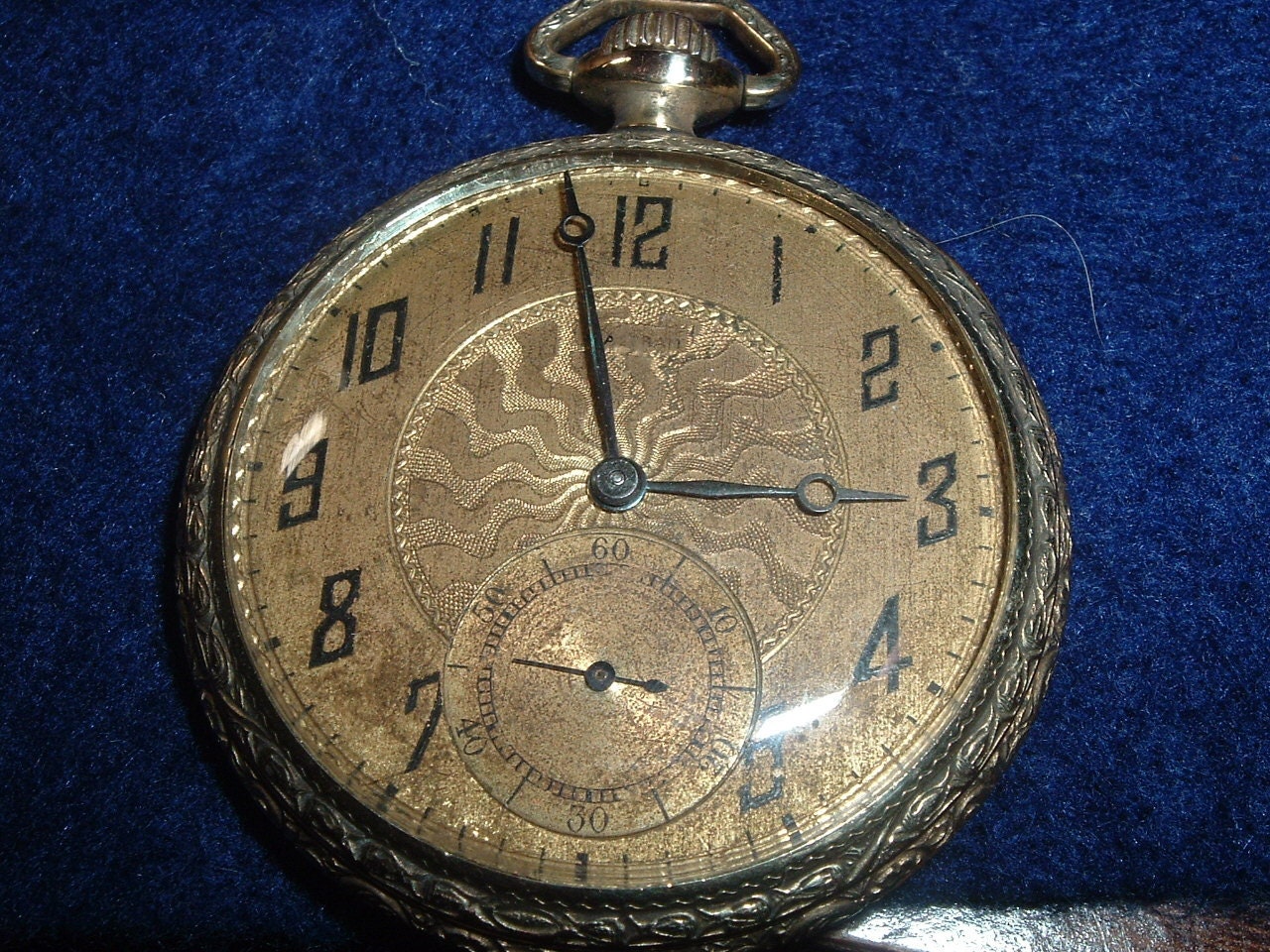
There is an excellent discussion on watch jewels on Wayne Schlitt's Elgin Website at: It should be noted that additional labor to properly adjust a watch did more to improve accuracy than adding jewels above 17 or 19. Any number of jewels over 21 usually failed to gain any additional timekeeping improvement. In adding 2 more jewels to bring a watch up to 21, the increase in accuracy was more theoretical than practical. Adding additional jewels, up to 19, usually produced a demonstrable improvement in timekeeping accuracy. From the 1860’s through the 1880’s, watches were said to be "Fully Jeweled" if they contained 15 jewels. The basic number of jewels in a "jeweled" watch is 7, after which, jewels were usually added in pairs. They provided hard, low-friction, wear-resistant surfaces. These were industrial jewels, not at all gem quality. The jewels in a watch were, for the most part, the bearings. Should the date not be listed there, this Waltham Production Date chart is a means for determining the approximate production date.
#WALTHAM POCKET WATCH GOLD SERIAL NUMBER#
There is also a Glossary of the terms provided by the serial number lookup. You can find out some basic facts about your Waltham watch by entering the serial number on the movement (the "works") in the field on the NAWCC Information Storage - Waltham Serial Number Data Base (don't use any commas).
#WALTHAM POCKET WATCH GOLD FULL#
Commonly referred to as "Waltham," the company made a full line of watches ranging from modest, affordable watches to some of the finest watches made in this country. Over the next hundred years or so of its existence, its output of jeweled watches (over 34 million) was only exceeded by one other company, the National Watch Co. It was the first successful company in America to manufacture watches in mass production using machinery to make identical (or at least, near identical) parts. (Waltham, MA) had its origins in the 1850's. Smaller mail-order retailers would case the watches, typically in a 20-year gold filled case and offer it only that way, with the buyer not having a choice of cases.

Eaton (in Canada), would offer the movements in a variety of cases of different design and quality in their catalogs. Large outfits such as Sears, Roebuck & Co., Montgomery Ward, or T.

The jeweler would then fit the movement to the case in a matter of moments. The practice at that time was to go to a jeweler, select the quality of the movement and then pick out the desired style and quality of case. The case companies made cases in those same sizes. Most watch companies just made movements (the "works") in industry standard sizes. Only a small percentage of American watches (or Swiss watches for the North American market) were cased at the factories prior to the mid-1920's.

Welcome to the NAWCC Pocket Watch Message Board!


 0 kommentar(er)
0 kommentar(er)
